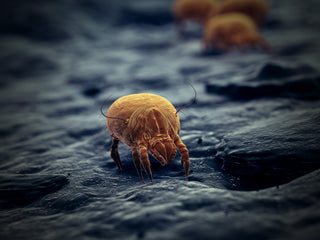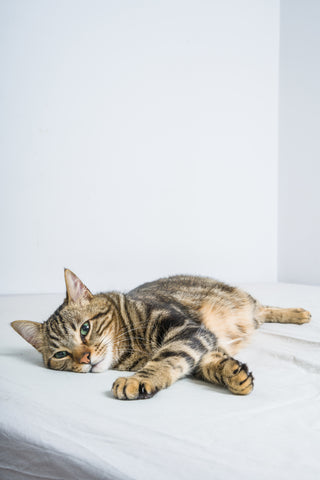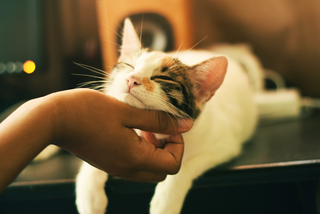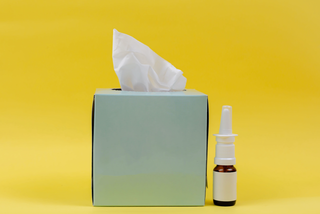TL;DR Pet dander particles (2.5-10 microns for dogs; 1-20 microns for cats) are invisible—70x smaller than sand grains. What you see is pet hair, which carries dander but isn't the allergen source. Dander = microscopic dead skin cells that become airborne for hours, triggering allergic reactions and asthma when inhaled. Ultrafine particles (under 0.1 microns) comprise 90% of airborne pollutants and penetrate deep into lungs. Control methods: Allergy Asthma Clean Allergen Spray by Allergy Defender neutralizes particles in air and on surfaces within 10 minutes; MERV-rated HVAC filters (change monthly); bathe pets bi-weekly; restrict pets from bedrooms; vacuum with HEPA filter twice weekly; wash hands after petting.
Key Takeaways:
- Pet dander invisible microscopic particles – 2.5-10 microns (cat dander 1-20 microns); much smaller than sand grains (70-90 microns); consists of dead skin cells, not pet hair (hair holds dander but isn't the source)
- Pet dander's airborne nature creates health risks – microscopic particles easily become airborne, linger for extended periods; inhaled dander triggers allergic reactions and asthma attacks; becomes a household dust component, worsening respiratory issues
- Ultrafine particles most dangerous – particles under 0.1 microns make up 90%+ airborne pollutants, penetrate deeply into lungs/small airways; fine particles (2.5 microns or smaller) enter the respiratory system, causing breathing problems
- Allergy Asthma Clean Allergen Spray by Allergy Defender - primary solution – minerals enclose and neutralize small particles in air and on surfaces (tabletops, carpets, upholstery); highly rated, effective approach
- HVAC filtration essential – use MERV-rated filters specifically designed to filter pet dander; change often; caution: not all filters are equal in effectiveness
- Additional control strategies – bathe pets regularly, minimize pet access to bedrooms, wash hands frequently after petting/handling pets to prevent dander spread
You love your pet, but you're allergic to it. So what to do? What exactly is making you allergic? Can you see pet dander?
Pet dander allergen particles range in size from 2.5 to 10 microns. Some Cat dander particles are even smaller, ranging from 1 to 20 microns. This is much smaller than a grain of sand– for comparison, one grain of sand is about 70-90 microns in diameter. So, unless you have super, immaculate vision, you aren’t going to see pet dander allergens. What you are most likely seeing is pet hair, which can hold small pet dander particles. Pet hair is not directly the source of pet dander.
Now, what can you do about pet dander that you can’t see? Well, don’t fear; just because you can’t see it doesn’t mean you are out of luck. Here are two quick tips to try today:
-
Use Allergen Spray; our minerals are designed to encapsulate and neutralize these small particles in the air and on hard surfaces like tabletops.
-
Use an air filter in your HVAC unit and change it often. Make sure you purchase an HVAC filter that is MERV-rated to filter pet dander. Caution: not all filters are the same.
What is Pet Dander?
Pet dander is composed of tiny flakes of skin shed by cats, dogs, and other animals. Unlike pet hair, which is often visible, pet dander consists of microscopic dead skin cells that are not easily seen by the naked eye. These particles are incredibly small, like we mentioned above, making them easily airborne and capable of lingering in the air for extended periods. When inhaled, pet dander can trigger allergic reactions and asthma attacks in sensitive individuals. Pet dander often becomes a component of household dust, worsening respiratory issues for those with allergies or asthma.
Can You See Pet Dander? Particle Size Does Matter
The size of airborne particles plays a crucial role in determining their impact on health. Airborne particulate matter can vary from coarse particles to ultrafine particles. Ultrafine particles, which are less than 0.1 microns in diameter, make up more than 90% of all airborne pollutants. These tiny particles can penetrate deeply into the lungs and small airways, posing significant health risks. Fine particles, which are 2.5 microns or smaller, can also get into the respiratory system, contributing to various indoor-related health problems. Understanding the size and behavior of these particles is essential for effectively managing indoor air quality and reducing health risks.
Solutions for Pet Dander Allergies
If you or a family member suffers from pet dander allergies, there are several effective strategies to ease symptoms:
- One of the most highly rated solutions is Allergen Spray. You can spray it in the air, on surfaces, and on carpets and upholstery.
- Bathing your pets regularly and minimizing their access to certain areas of the home, such as bedrooms, can further reduce the presence of pet dander.
- Additionally, washing your hands frequently, especially after petting or handling pets, can help prevent the spread of pet dander throughout your home.
Pet dander is a common allergen that can trigger allergic reactions and asthma attacks in sensitive individuals.


















